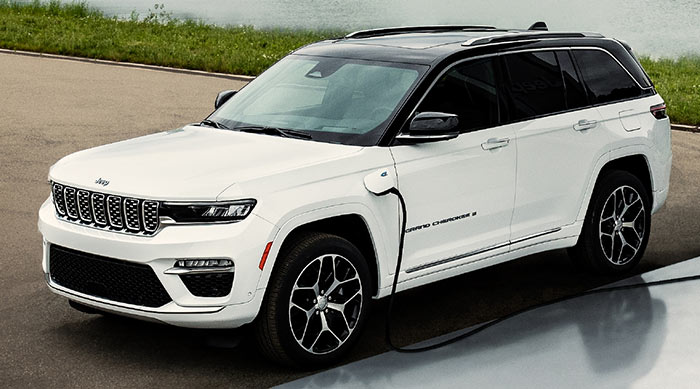A new generation of engines has bolstered power across the entire former-Chrysler lineup, with the possible exception of the four-cylinder realm—where output is higher, but reviewers have gotten slower acceleration.
The across-the-board increase was highlighted by comments from “vbondjr1”:
| New / Old | Old HP | Old Torque | New HP | New Torque |
|---|---|---|---|---|
| 1.3T / 2.4 | 184 | 177 | 177 | 200 |
| 2.0T / 3.6 | 305 | 269 | 270 | 295 |
| 4xe / 5.7 | 395 | 410 | 375 | 470 |
| 4xe / 3.0D | 240 | 420 | 375 | 470 |
| 3.0T / 5.7 | 395 | 410 | 420 | 468 |
| 3.0T / 6.4 | 485 | 475 | 510 | 500 |
| 3.0T / 6.2S | ? | ? | 797 | 707 |
The chart above shows the best power from each outgoing engine (the 3.6, 3.0 diesel, and 5.7 Hemi are all taken from the Ram 1500; the Hemi was rated at 375 hp and 410 lb-ft of torque in the Challenger with manual transmission and 372/400 in the Challenger automatic, for example). The hellcat (6.2S) comes in 707 and 797 horsepower flavors.
The shift from the 2.4 to the 1.3 turbo drops seven horsepower but adds 13 pound-feet of torque; and the torque range is wider than in the 2.4.
Reviewers have cited the 2.0 turbo as having a clear advantage over the 3.6 Pentastar due to its wide torque range, despite having lower horsepower. In this case owners drop 35 horsepower, around 10%, which is a hefty amount—but they gain 26 pound-feet which peak at lower revs and stay high.

The 5.7 Hemi has two replacements—the 4xe setup, which is a plug-in hybrid, and the new 3.0 liter Hurricane straight-six. Both simply clobber the old Hemi in torque; the 4xe is at a 20-horse disadvantage and a 60 pound-foot premium, but the electric assist is strongest where gasoline engines are weakest. In driving, the 4xe is more responsive, and in the Wrangler, it nearly matches the 6.4 Hemi in acceleration. The 4xe easily out-torques the diesel engine, too, while clobbering it in horsepower—by 135 hp.
One would think the 6.4 Hemi would be a tough act to beat, but the Hurricane beats it with 25 hp and 25 lb-ft of torque, while increasing gas mileage by 10%. The real challenge will be topping the monstrous, supercharged Hellcat V8, and it’s unlikely the company will be able to do that with a gasoline engine. Instead, chances are it will be countered with an all-electric or gasoline-electric hybrid sporting giant motors as well as a Hurricane engine. Owners may have to take lower peak output numbers, but Dodge is unlikely to settle for lower acceleration.
All of the newer engines increase the gas mileage of the vehicles they are in by a good margin, saving money for both the driver and for Stellantis, which has to pay hefty sums for fuel-economy credits each year. All of them carry Auburn Hills fingerprints, as well—the GSE and GME both combine Chrysler and Fiat designs and strengths. When the transition is done, the Dodge, Chrysler, Ram, and Jeep product lines will be stronger, with more power—albeit fewer pistons.
Chart and explanations via motales.com